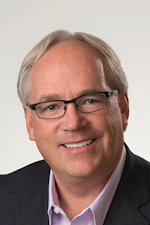How a blended approach to insurance can work for your practice
Generally, dental practices either participate as in-network providers, or they operate on a fee-for-service model. But the truth is, offering insurance doesn’t have to be all or nothing. What’s the right approach for your practice? The answer is, “It depends.”
There are benefits to participating in dental insurance groups. Dental practices gain access to a built-in pool of patients, with minimal marketing needed to attract new ones. It’s a volume-based business with low reimbursement rates. But these dentists work long hours and see many patients. Unfortunately, they’re often losing money in the process.
Meanwhile, fee-for-service practices often attract patients who have large or complex cases that many dentists cannot solve. These cases can generate high fees, so a practice needs to see fewer patients to be financially successful. But specialty practices can be especially vulnerable to economic downturns, and they’re dependent on one person—the specialist—to generate revenue.
More dental practices are blending insurance with fee-for-service as a flexible approach to fit the practice’s operating model and better serve patients’ needs. This blended approach allows practices to provide top-notch care while receiving appropriate compensation.
Striking the right balance
There’s no perfect equation for finding the balance that’s right for your practice. Every practice is different. But it’s important to consider the five-year plan or long-term vision for your practice.
Dr. Michael Verber of Verber Dental Group believes that every patient deserves the opportunity for complete care. His patients are becoming more cash-conscious, but he didn’t want their care to suffer due to insurance coverage limiting their treatment plans. So, he created his own benefit plan, which he administers within his group to make dental care accessible to all.
It’s also important for dentists to consider the lifestyles they want. Fulfilling dentistry starts with personal fulfillment both in and out of work. Ask yourself questions such as, “Will my practice depend on me for revenue?” If so, your practice may have more fee-for-service patients. Or you may ask, “How will life changes such as starting a family or considering retirement impact my future?”
With a blended approach, a specialist who is considering retirement may bring in a general dentist who performs routine care and bills insurance. The specialist can guide this dentist to confidently treat complex cases, which often fall in the fee-for-service model.
For example, my daughter Kaitlyn will join my practice when she graduates from dental school. Over time, she’ll learn how to handle complex cases as I decrease my involvement in the practice and gradually plan for retirement.
Successfully making the transition
Many dentists are hesitant to change their operating models because the stakes are high. These five ideas can make the transition smooth and successful.
1. Allot more time for each patient.
When adding fee-for-service dentistry, a practice cannot continue to schedule the same way. It takes more time to do a complete exam, which allows the dentist to properly diagnose instability within the masticatory system, predictably treat any case, and improve the patient’s oral health.
Plus, each dentist will need time for patient consultations and treatment planning. I allot 10–15 minutes for hygiene and occlusal at the first visit, followed by 30 minutes for a consultation. It’s crucial to have respect for patients’ time, which requires you, the dentist, to be on schedule.
2. Build trust through communication.
Communication builds trust with patients and leads to long-term relationships. It helps patients make informed choices about their treatment. Your team members need to recognize signs of instability and then accurately describe to patients what’s happening in their mouths during treatment. They should tell each patient what they see as they examine and document the complete exam. This is an educational opportunity to discuss and show what’s normal and abnormal, which leads to codiagnosis.
Dentists should ask leading questions as they notice signs of disease or instability during an exam: “Has anyone ever told you why this tooth fractured?” or “Has anyone explained to you that your issues are caused by how your teeth function?”
3. Make a plan.
It’s tempting to discuss all of the treatment options that are available to your patients, but it’s more effective to recommend one plan that you’re confident will solve a patient’s issue. Patients trust that you’re the expert who has the knowledge to recommend solutions.
Ask questions, gather the facts, and take photos to help in your treatment planning process while you’re with patients. Tell them that you’d like to study their information in order to identify the best solutions for them. Then, make treatment-planning decisions away from patients.
Savvy dentists communicate the costs involved with treatment throughout the case presentation. They should be ready to discuss sequencing and phasing for large, complex cases and explain the costs associated with each phase. It’s not uncommon to phase large cases over a two-year time frame to help patients spread treatment over multiple insurance benefit years—a cost-effective option to cover the cost of care.
4. Discuss cost.
Some dental practices make the mistake of avoiding discussions about cost until a patient is ready to leave. But savvy dentists talk with patients about the solutions and related costs and how their benefits can or can’t help cover the cost.
Shannon Johnson, DDS, asks questions to better understand a patient’s ability to pay for the care that they need. For example, a patient with two kids in college may be financially strained. So, Dr. Johnson focuses on stabilizing the patient first and then develops a long-term plan that may stretch as long as six years.
In a blended practice, it’s critical to understand the procedures that are and are not covered in order to work in tandem. Benefits may cover only a limited portion of a patient’s care, but to patients, discussing what is and is not covered can go a long way in establishing a partnership with the dentist and practice.
Jeff Scott, DDS, of Jeff Scott Dentistry looks at his role as an advocate for patients. His team works to get the maximum benefit for the patients who have complex cases. For example, if a patient has a maximum benefit of $1,500 per year with a treatment plan that costs $30,000, then Dr. Scott discusses which portions are covered, secures assignment of benefits, and develops a phased approach based on affordability.
5. Look at the patient experience.
Patients form different expectations for their experiences based on the dentist’s level of expertise. Their first impression sets the tone for their experience, which ultimately determines their view of the dentist’s level of expertise. Patients often expect fee-for-service practices to offer five-star service with everything from the scheduling experience to the practice’s visual presentation.
Take a fresh look at your practice. Walk in the front door and really take in what the patient sees, smells, and hears. An office that’s orderly and clean shows that you have pride in your profession and mastery in your field.
Conclusion
The blended approach can create a viable economic model that meets the needs of patients while supporting a dentist’s personal and professional goals. It can also help buffer the economic impacts of a downturn. But best of all, the blended approach can help dentists have a more fulfilling career.
About the featured practices
Chesapeake Center for Complete Dentistry
John Cranham, DDS, practices at Chesapeake Center for Complete Dentistry. The practice has traditionally been heavier on fee-for-service dentistry, but he’s incorporating more general dentistry as his daughter joins the practice.
The Dawson Academy
Shannon Johnson, DDS, is an associate faculty member at the Dawson Academy, where she leads two Dawson Study Clubs. She has owned and operated a practice in Louisville, Kentucky, and currently practices as part of a dental service organization (DSO) in Kentucky. She’s had a wide range of experience with patients using both insurance benefits and in-house dental discount plans.
Jeff Scott Dentistry
Jeff Scott, DDS, practices at Jeff Scott Dentistry, his cosmetic and restorative-focused practice in St. Petersburg, Florida. Today, his practice has a blended model with a heavy focus on fee-for-service dentistry. His practice left the participating networks and now accepts assignment of benefits.
Verber Dental Group
Michael Verber, DDS, is president and CEO of Verber Dental Group, a company with a dental lab, dental benefit plan, and seven practices. The group has about 18,000 patients. It participates in insurance networks, offers fee-for-service, and administers its own dental plan. Dr. Verber practices at Verber Family Dentistry, part of Verber Dental Group, in Camp Hill, Pennsylvania.
JOHN C. CRANHAM, DDS, is the clinical director of the Dawson Academy, the leading center for clinical mastery in dentistry. In this role, he teaches many of the hands-on courses, presents many of the lectures, maintains the relevancy of courses, and leads its faculty members. He also runs an esthetic-oriented practice in Chesapeake, Virginia.







